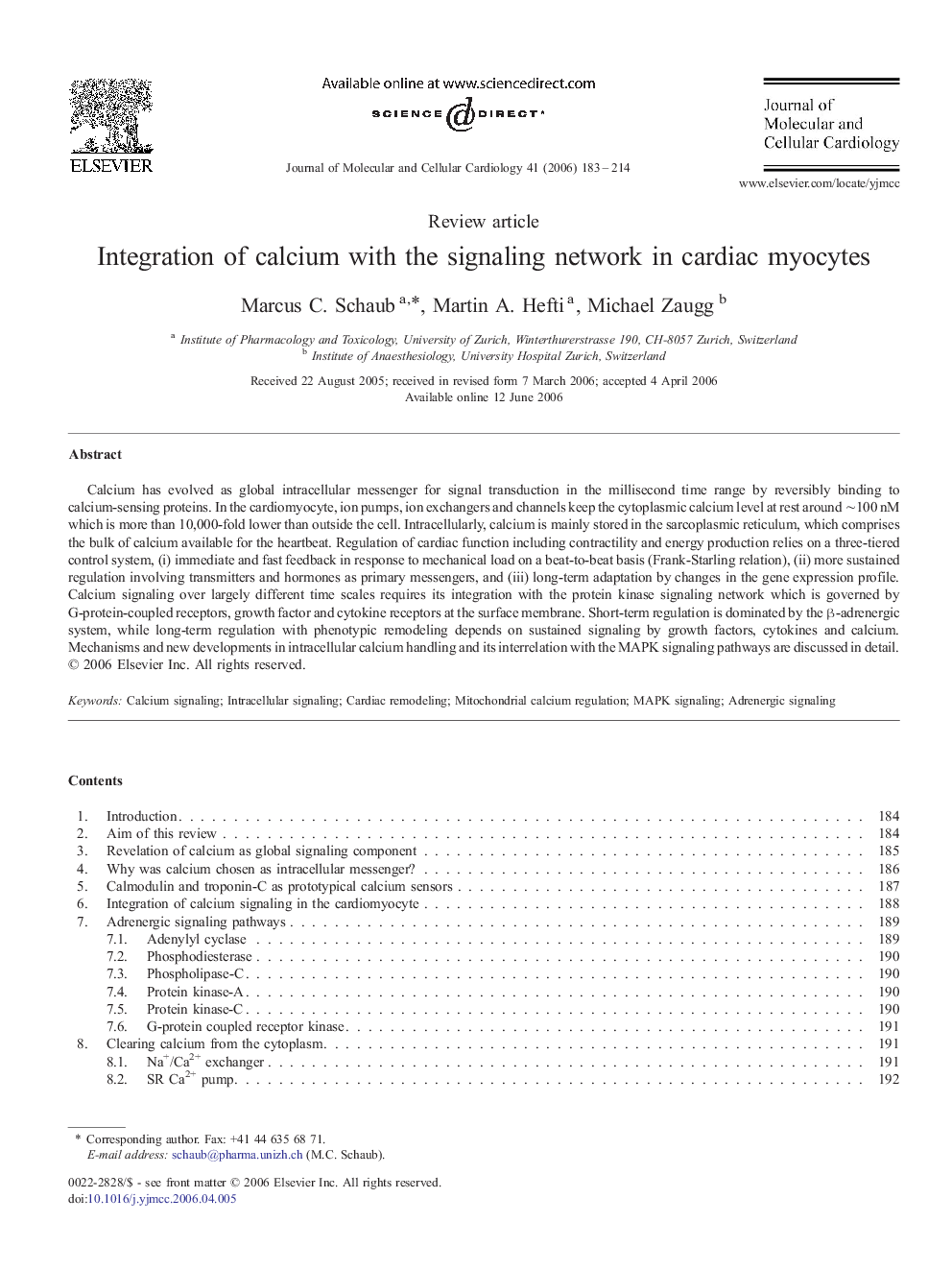| Article ID | Journal | Published Year | Pages | File Type |
|---|---|---|---|---|
| 2192419 | Journal of Molecular and Cellular Cardiology | 2006 | 32 Pages |
Calcium has evolved as global intracellular messenger for signal transduction in the millisecond time range by reversibly binding to calcium-sensing proteins. In the cardiomyocyte, ion pumps, ion exchangers and channels keep the cytoplasmic calcium level at rest around ∼100 nM which is more than 10,000-fold lower than outside the cell. Intracellularly, calcium is mainly stored in the sarcoplasmic reticulum, which comprises the bulk of calcium available for the heartbeat. Regulation of cardiac function including contractility and energy production relies on a three-tiered control system, (i) immediate and fast feedback in response to mechanical load on a beat-to-beat basis (Frank-Starling relation), (ii) more sustained regulation involving transmitters and hormones as primary messengers, and (iii) long-term adaptation by changes in the gene expression profile. Calcium signaling over largely different time scales requires its integration with the protein kinase signaling network which is governed by G-protein-coupled receptors, growth factor and cytokine receptors at the surface membrane. Short-term regulation is dominated by the β-adrenergic system, while long-term regulation with phenotypic remodeling depends on sustained signaling by growth factors, cytokines and calcium. Mechanisms and new developments in intracellular calcium handling and its interrelation with the MAPK signaling pathways are discussed in detail.
